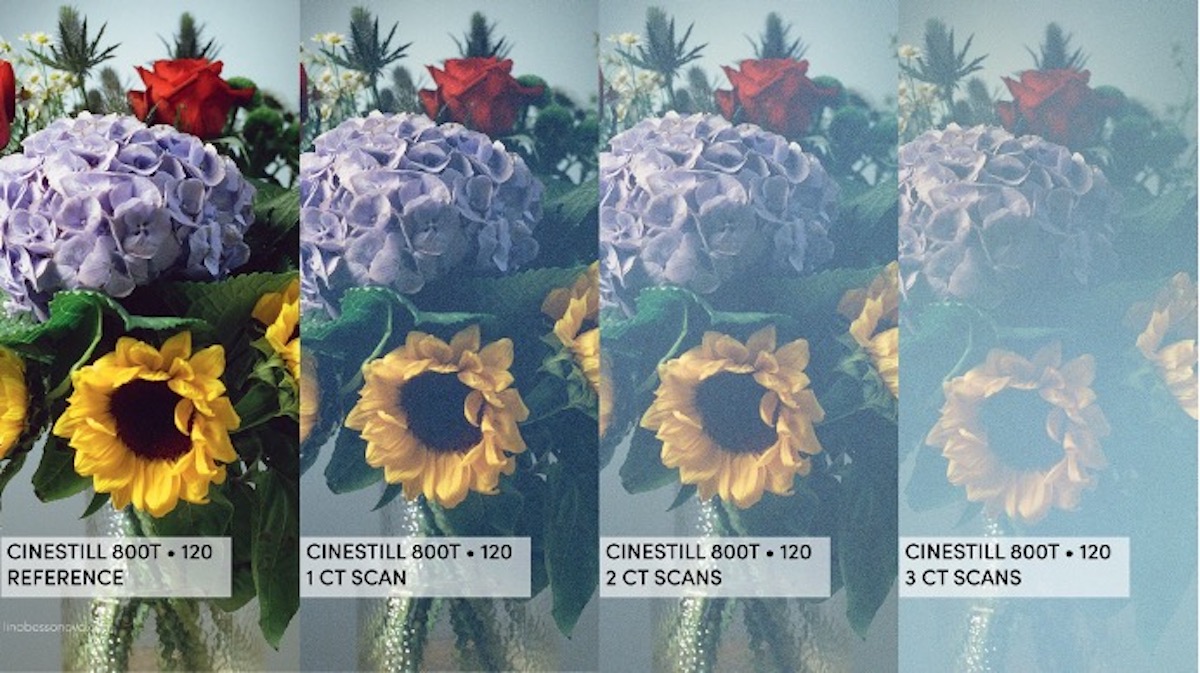Are Films REALLY Safe In Airport Scanners??
By Lina Bessonova
“I’m sorry, madame, but either you put your film through this scanner, or you can’t pass security! And please, don’t delay other passengers.” I had never seen such airport scanners before, but I had a bad feeling just looking at one. The airport security staff in Geneva insisted that the scanner was safe for films up to 1600 ISO, and the lady even brought a printout of the data sheet which confirmed her assertion. She flat out refused to do a hand check, even though I explained several times in perfect French that on those twenty rolls were two weeks of my documentary work, not holiday snapshots.
The crowd behind me is growing, I am feeling extremely pressured and intimidated — so, twenty rolls of T-MAX 400 disappear inside the brand-new, big, clinically white scanner, freshly installed at the Geneva Cointrin airport. Fast forward a few days, and I am taking solid grey rolls out of a developing tank. This isn’t just a bit of base fog; the films are fully burnt.
But could it have been bad processing? A bad film batch? A weird light leak? Could I have overheated my film somewhere? The security staff are trained professionals, the scanner manufacturers give “film safety” assurances, and they can’t be wrong — can they?
The official reassurance (and pressure) made me doubt myself. But I still started being very cautious around airport scanners. I observed security procedures at various airports carefully, asking for hand checks everywhere I could, and making note of the responses, figuring out a way to get my films through securely. During the process, I experienced a huge number of intimidating episodes, including the time the Nice Airport security staff called the police and wrote a report about me just because I insisted on a hand check — and after all that, they pushed my films through the X-ray machine. I occasionally shared my frustration on Instagram and got hundreds of messages from people all over the world who had the same (or even worse) experiences, missing flights or losing valuable shots because of airport security procedures.
Even though I’d been aware of the issue before, it became clear that flying with film was a true problem for the analog community, not just an inconvenience. Yet the question remained: were all those X-ray machines which seemed to ruin films random accidents, or could they be shown to be an actual threat? Other questions occurred to me, too. What about protective bags? And what about the claim that X-ray scanners are “safe up to 1600 ISO”? I decided to design an experiment, which could possibly give all the answers.
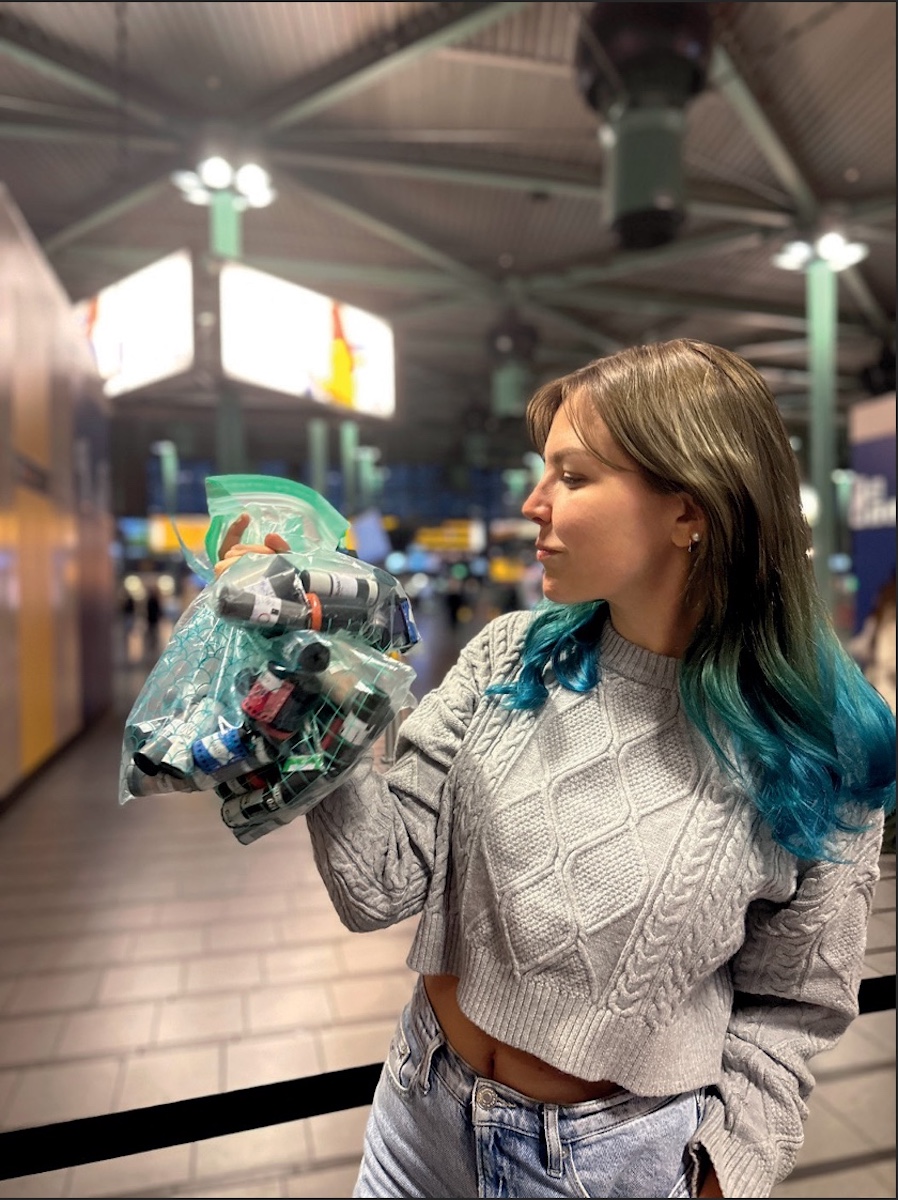
THE EXPERIMENT
My cat is thrilled that we are having what she considers a party: it’s 4 AM and the floor is covered with film boxes, containers, and scraps of aluminum wrapping. The human is moving around the room, occasionally dropping colorful pieces of paper which are fun to play with. However, the white furball is the only one having fun: my fingers are bleeding, my wrists are hurting, I’m only halfway done with the exposures, and the flight to Amsterdam is departing in less than ten hours.
Why Amsterdam? Well, remember that modern white monstrosity of a scanner in Geneva? Amsterdam Schiphol has 25 of those CT (computer tomography) scanners. And I am planning to go through them three times, recording the amount of damage to 35mm and 120 films, with and without a protective bag. And before that, the plan is to go through the Berlin Brandenburg “old” X-ray scanners six times, to check the effect of repeated exposures. All of this requires a lot of well-sorted film, which proves to be a bigger task than I had imagined. And yet, at 11 AM that same day, I am already at the Berlin airport, doing my first round with 12 bags of film.
After every round, two of the plastic bags (one from a protective pouch, one from a cotton tote) are left with the cameraman — on this particular day, he is an iPhone-man, as we are filming very discreetly. After going six rounds, we leave the twelve “Berlin” bags with my husband at Fotoimpex, and take six more to Amsterdam, this time asking for a hand check. As we have a bunch of 3200 film, the request is granted.
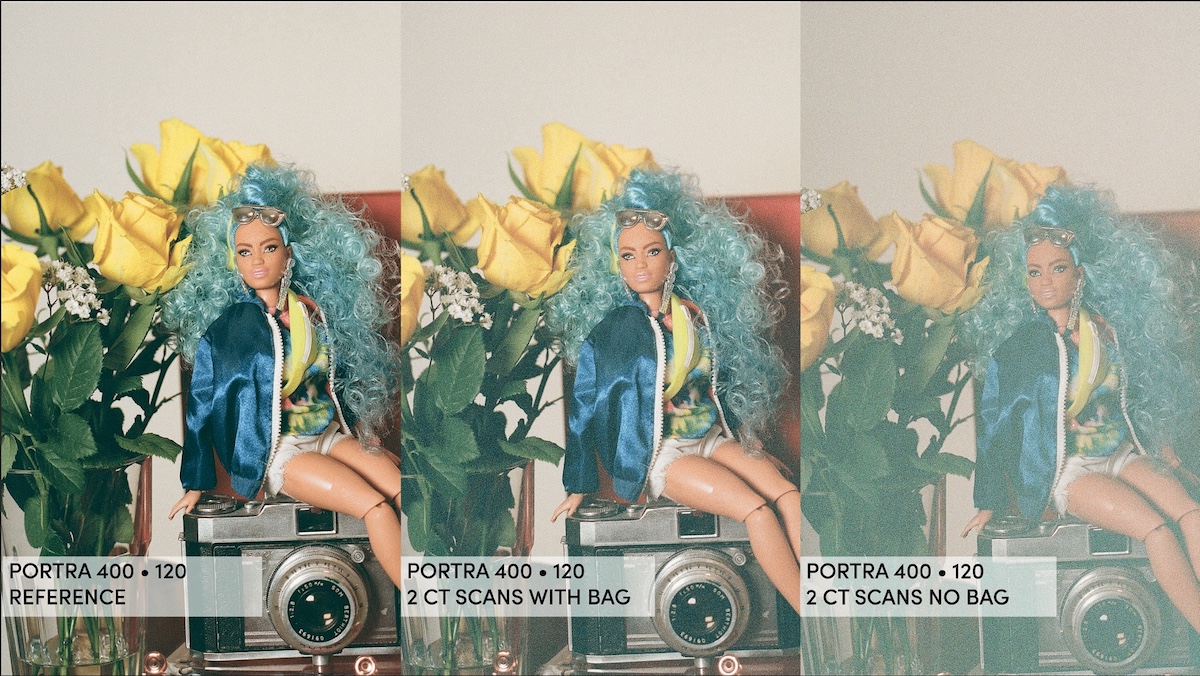
CT SCANNERS
As we explore the Amsterdam airport, we see several line- ups of CT scanners. They’re futuristic looking, quite fast, and very powerful. If you’re told you don’t have to take liquids and laptops out of the suitcase, that’s a CT scanner. A regular X-ray scanner has one plane which emits radiation. (Fun fact: X-rays were discovered by a German scientist, W.C. Röntgen, who shot some of theworld’s first X-ray images on dry plates from “Dr. Schleussner” which became ADOX.) CT scanners have the source of the X-rays going in a circle around the thing to be scanned, creating a 3D image. The “old” X-ray scanners have a power limit; the CT scanners can go around in circles as many times as the security staff wants, causing immense damage to the film. Yes, immense. Shockingly more than I expected. At every ISO.
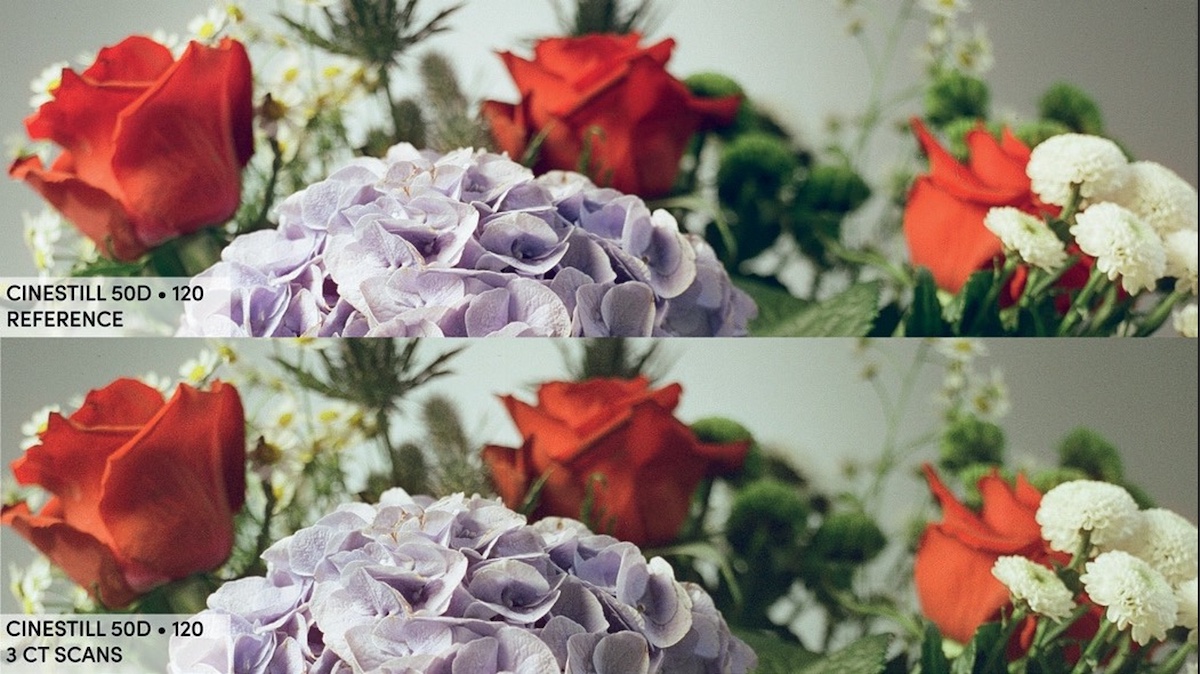
THE RESULTS
Even understanding the CT technology, I had high hopes for Cinestill 50D. And at first glance, this 50 ISO, daylight-balanced film seemed almost okay. However, high-quality scans revealed the damage: especially at -1 and -2 stops, the fog is quite apparent. For 100 ISO, I had ADOX CHS 100II: in black-and-white, the color shift is not there, so the damage seems slightly more tolerable. But at 200 ISO, that base fog is progressing, present at borderline usable levels (with a bit of a muddy veil over the image), and the fog starting to visibly ruin film at 400 ISO. I re-tested CT scans with Cinestill 400D and Portra 400, consistently getting heavy color shift and base fog. And it only went downhill from there. After a single CT scan, Cinestill 800T doesn’t look like itself anymore. And Delta 3200 — well, that one is obviously dead.
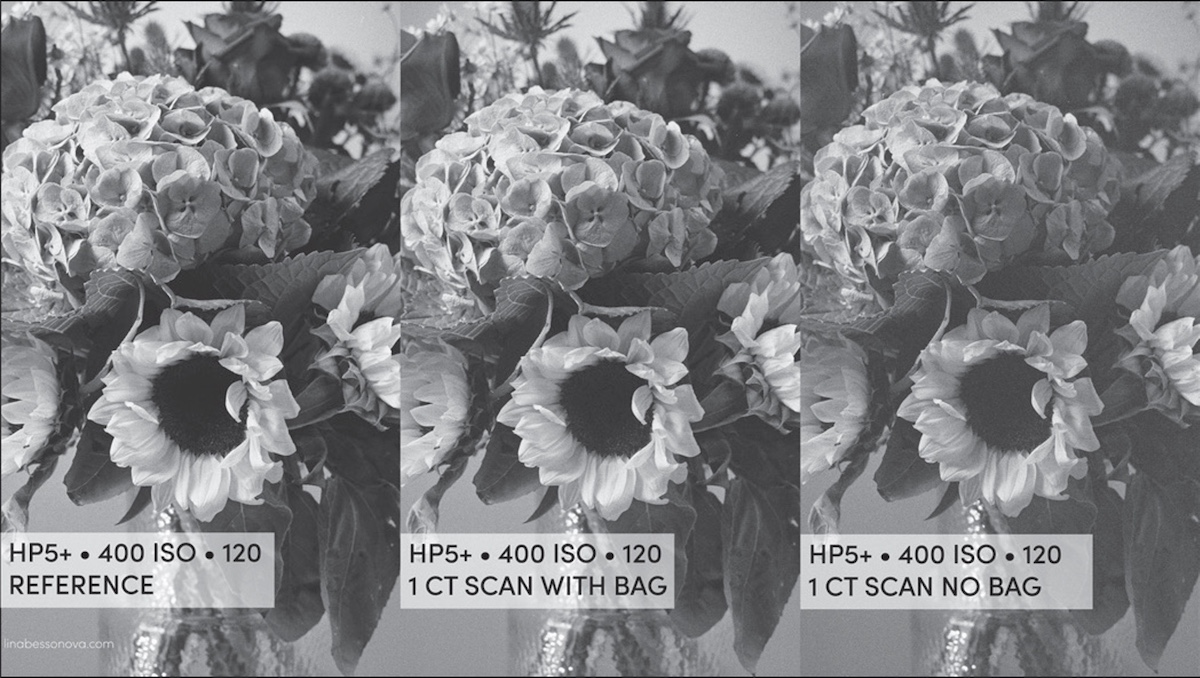
X-RAY SCANNERS
The CT scanner damage is so impressive that it’s easy to overlook what the “old” X-ray machines do. The negatives, except for Delta 3200, didn’t exhibit dramatic damage or visible waves. In fact, if there were no reference films, the ones that went through X-rays six times would have looked fine. Except that they weren’t all, actually, fine.
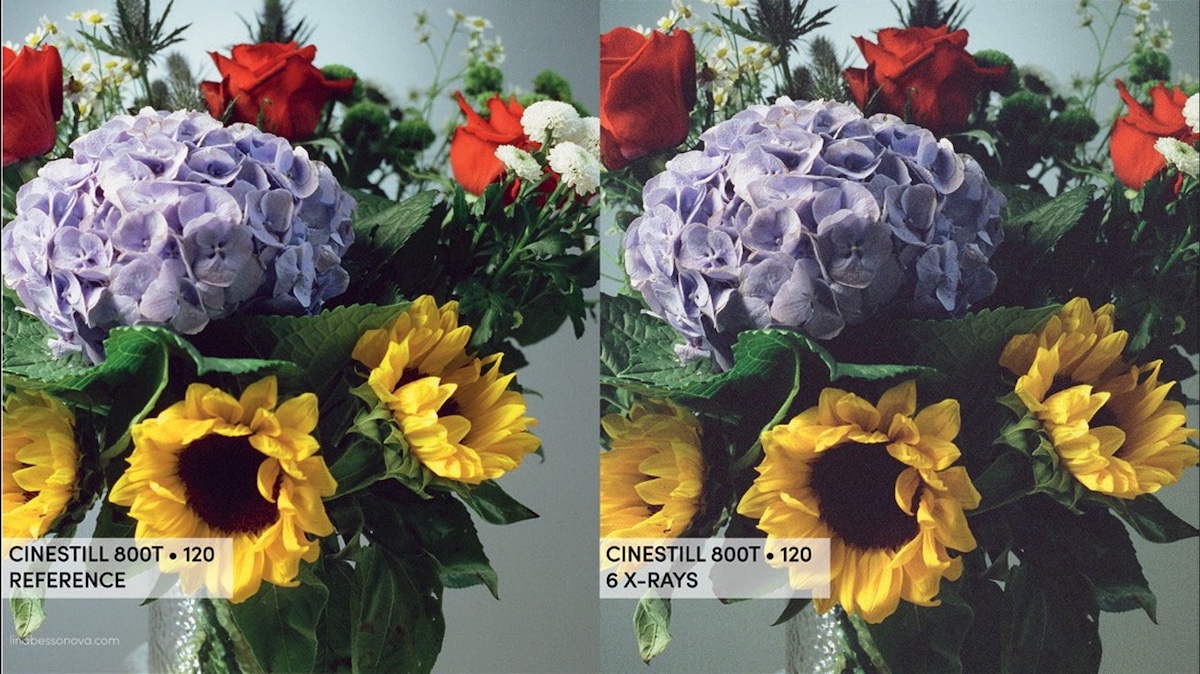
35MM VERSUS 120
That little steel canister that holds the 35mm film, and the fact that 35mm roll is thicker, offer quite a bit of protection. The part of the roll which is closer to the center consistently exhibits 30- 50% less fog than the outside layers. There was no test done on sheet film, but my assumption is that it’s even more vulnerable than 120.
PROTECTIVE BAGS
The lead-lined bags help, but only to a certain point. Their protection ranges from 30-50%, sometimes a bit more, but it’s never 100%. They are great for keeping film up to 800 ISO usable after 1-2 CT scanner passes, but over two passes, for every ISO over 200, there is quite serious visible damage.
Facing those results, I wondered whether there was any way to protect the films to the extent that the CT scanner wouldn’t be able to reach them. I cut an X-ray shield apron open and used that thick lead rubber. (Important note: lead is a heavy metal; please don’t handle materials containing lead at home if you have small children.) I tested one and two lead layers, with and without steel, going through CT scanners with Portra 400 twice. Obviously, carrying thick lead-lined double-layered bags is not a viable solution for traveling; they’re super heavy. I just wanted to see if full CT scanner protection was even possible.
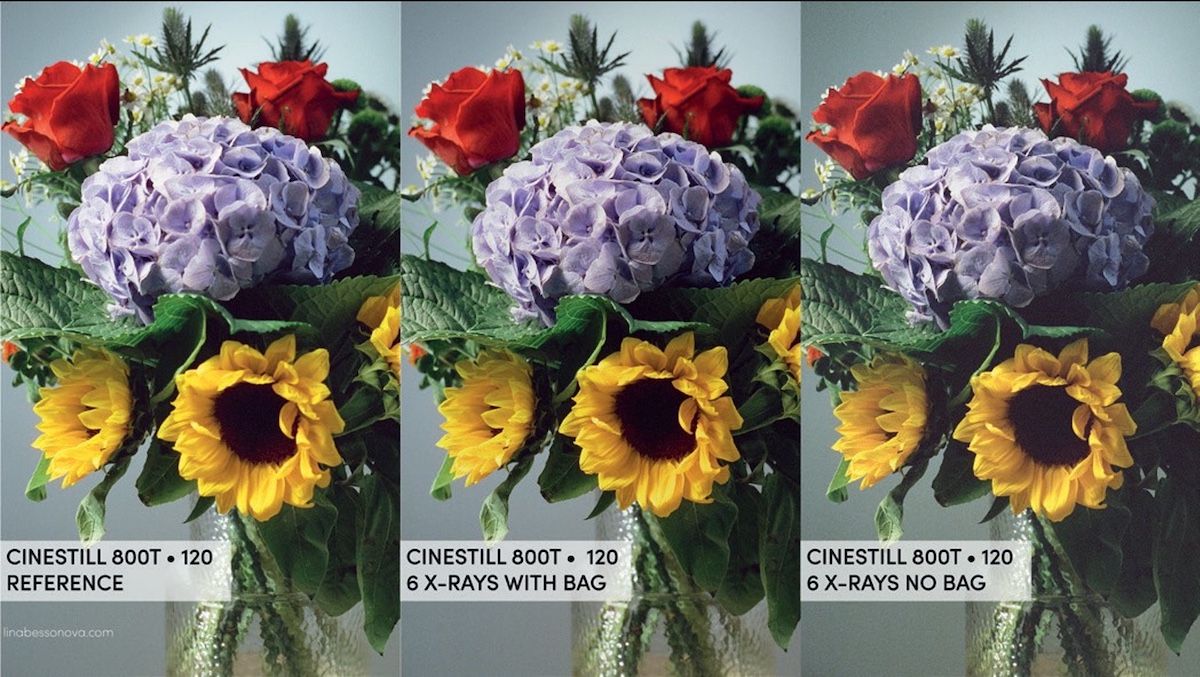
CONCLUSION
Going through airport security is a game of variables: film ISO, film format, protective bag, intensity of the scanner, time inside a scanner, and number of times the film is scanned. With X-ray scanners, we can still afford to gamble, taking small damage and occasional waves on our rolls. With powerful CT scanners gaining popularity, it stops being a gamble; rather, it becomes a task of protecting our film from guaranteed damage.
SilvergrainClassics sent an official press request for comment about film safety to the scanner manufacturers three months in advance of publication but did not receive any reply.
The video of the entire experiment is on YouTube.com/linabessonova
All images are on www.linabessonova.photography/videos#/airport-scanners/
The project was supported by Fotoimpex – fotoimpex.com
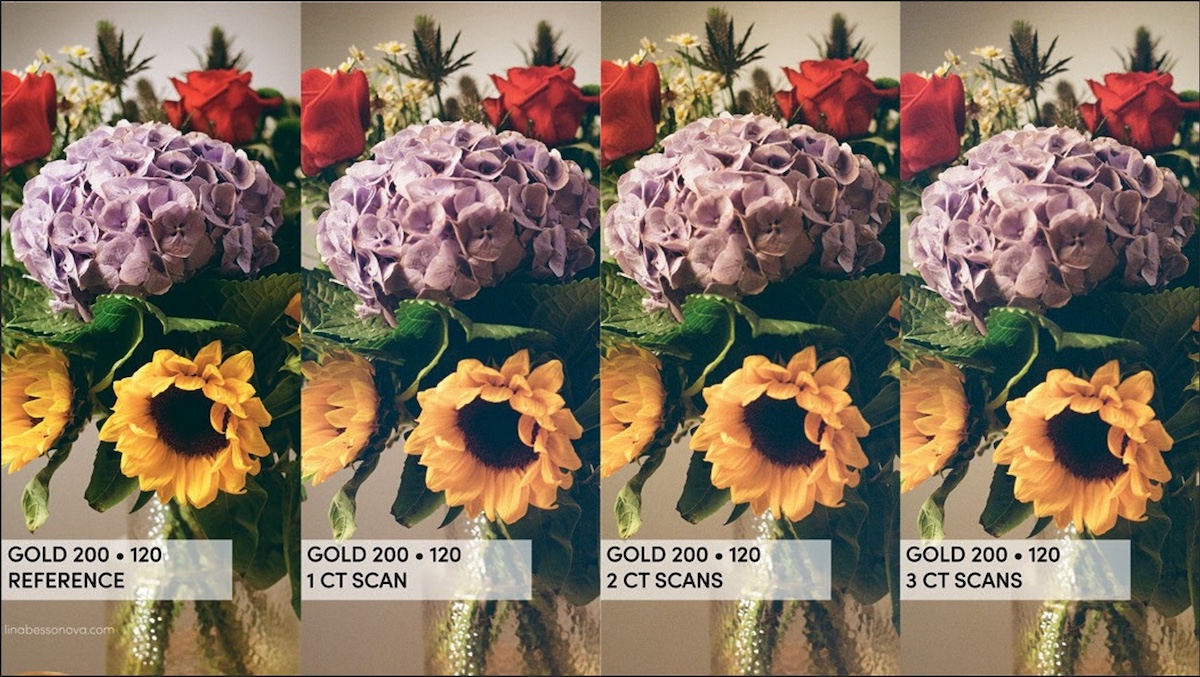
These online articles are free – we see it as our contribution to the film photography community. You can support this content by subscribing to our awesome print magazine about the entire world of analog photography!
https://shop.silvergrainclassics.com/subscriptions/

